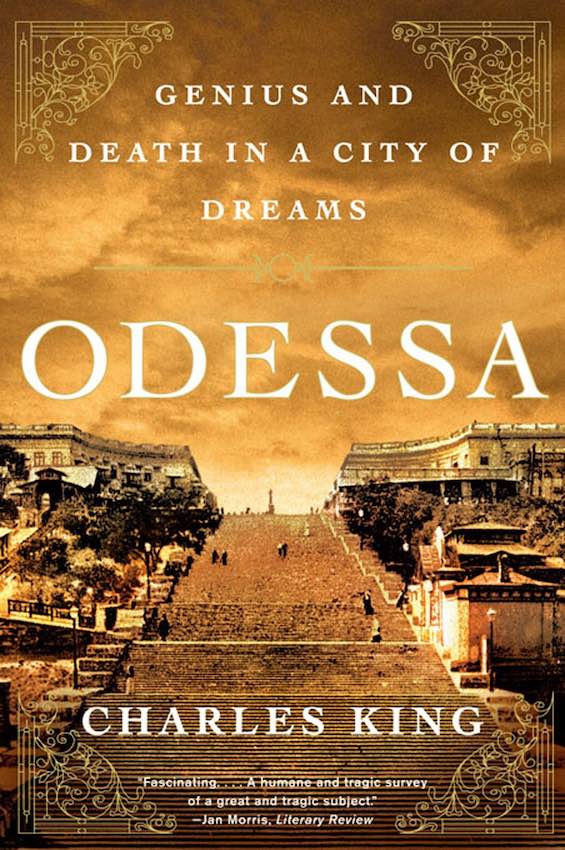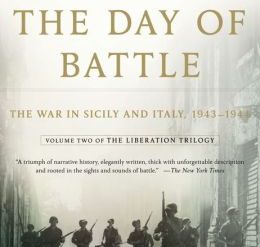
My father’s parents emigrated to the United States in 1901 with the three oldest of their eight children. I was led to believe they were survivors of a pogrom in the Russian Empire, but they wouldn’t talk about the experience—or anything at all about their lives in the Old Country. At any rate, I was much too young to question them closely during the one or two brief times they visited us while still alive. All I could learn later was that they had lived in the Pale of Settlement in some sizable town or city (not a shtetl) somewhere in what is today western Ukraine. There, the roots of antisemitism run deep.
I don’t know with certainty that my grandparents had been among the huge Ashkenazi Jewish population of Odessa, but they couldn’t have lived far from there. And their lives were undoubtedly influenced by what took place in the great city, which set the tone for all of southern and western Ukraine. All of which explains why I turned to Charles King’s superb account of the history of Odessa for insight into the lives of my forebears.
A city with a colorful history second to none
There are 10,000 cities on Planet Earth (defined as urban centers with a population of 50,000 or greater). But the names of only a relative handful come readily to mind. The biggest ones, of course: Shanghai, Tokyo, Mumbai, New York, Mexico City, and perhaps a couple of dozen others. Some are memorable for other reasons: Geneva, Venice, Berkeley, Salzburg. Odessa falls into that second category. It’s not large as cities go, with a population of only about 1.2 million. But this is a city with an outsized reputation.
Odessa is “a city that had been scouted by a Neapolitan mercenary, named by a Russian empress, governed by her one-eyed secret husband, built by two exiled French noblemen, modernized by a Cambridge-educated count, and celebrated by his wife’s Russian lover.” Over the years, the city became home to such notable figures as poet Alexander Pushkin, revolutionary Lev Bronstein (Leon Trotsky), Zionist leader Vladimir Jabotinsky, authors Sholom Aleichem and Isaac Babel, poet Anna Gorenko (Anna Akhmatova), and others who are less well known today but were among the best and brightest of the Russian Empire in their time. Few places anywhere on Planet Earth can lay claim to such a colorful history, and Charles King does the story proud.
Odessa: Genius and Death in a City of Dreams by Charles King (2011) 337 pages ★★★★★

A storied and tragic history
In his treatment of Odessa’s epic history, King traces the antecedents of the modern city from the era of the Tatars and Genghis Khan. He follows the site’s transformation from a tiny village on the shore of the Black Sea into a bustling, planned town during the reign of Catherine the Great and her successors, and later into the fourth largest city of Imperial Russia during the 19th century. Its population topped 400,000 by the beginning of the 20th century. But the focus of this book is the history of the city’s Jews, who constituted as many as one-third of its inhabitants by the year 1900. And their fate reflected the rise of virulent antisemitism and its genocidal expression in the Holocaust that followed. It’s no surprise that Odessa won a National Jewish Book Award.
The roots of antisemitism
In the 1870s and 80s, Odessa became “the site of the first large-scale pogroms in modern Russian history.” But why? And why then? King offers a partial explanation. “Jews did not dominate economic life overall, given the city’s reliance on shipping and agricultural output, areas in which Christian proprietors and producers still held pride of place. But their role tended to be public, prominent, and precisely in those spheres where they and Odessa’s newer immigrants were in most direct contact. Given state-imposed restrictions on landownership and access to particular professions, Jews were naturally concentrated in the roles still open to them by law and convention.”
An economic explanation?
“By the beginning of the 1880s,” King writes, “Jews accounted for two-thirds of the city’s registered merchants and traders, nearly three-fourths of the innkeepers and proprietors of public houses, and two-thirds of veterinarians and pharmacists. By contrast, Christians made up over 80 percent of he city’s workers, including some three-fourths of the workforce employed in Jewish factories.” And it was those workers, egged on by antisemitic Orthodox priests and officials and protected by the police, who perpetrated the recurrent rampages through Jewish shops and homes. In King’s view, envy, frustration, and anger over the unfairness of life as well as religious motives and official encouragement nurtured the roots of antisemitism.
But those events were merely a warm-up to much worse. “In Odessa a concatenation of factors led to its own version of [the Revolution of] 1905, producing the deadliest and most notorious pogrom in Russian history. . . [P]erhaps three hundred Jews and another hundred non-Jews fell victim to the violence of October, adding to hundreds of people, both Jewish and Christian, killed the previous June.” All this, in the wake of the Russian Empire’s defeat in the inglorious war with Japan.

The Holocaust in Odessa
When Nazi Germany invaded the USSR on June 22, 1941, Odessa’s population stood at roughly 600,000, of whom some 180,000, or 30 percent, were Jews. According to the Holocaust Encyclopedia, “At least half of the city’s Jewish population had fled Odessa before Axis troops surrounded the city. Between 80,000 and 90,000 Jews remained in Odessa after the Romanian occupation.” Because it was not the Germans but their Romanian allies who laid siege to the city and later subjugated it. And by the time the Soviet Army liberated Odessa in April 1944, the Jews were all either dead or imprisoned in concentration camps.
As King explains, “In one of the least-known episodes of the Holocaust, at least 220,000 Jews were killed in or en route to a string of ghettos and concentration camps established in portions of Soviet Ukraine and overseen by the Romanian state.” Germans alone weren’t solely responsible for the Holocaust. Millions of Romanians, Ukrainians, Poles, and other Eastern Europeans were willing, even eager participants.
“Today,” King writes, “no one knows exactly how many Jews make up the small community in a city of 1.2 million people; some estimates put the figure at 36,000, although that is probably too high since the last Ukrainian census, in 2001, recorded only 13,000 Jews in the entire Odessa district.”
About the author

Charles King is the author of eleven books, many of them examining the history of the six nations fronting the Black Sea. He is professor of international affairs and government at Georgetown University, where he has served as chair of both the Department of Government and the Edmund A. Walsh School of Foreign Service.
King’s author website reveals that he “grew up on a cattle farm in the Ozark foothills of northwest Arkansas, one hollow over from J. William Fulbright’s rural home at Rabbit’s Foot Lodge. He studied history and philosophy at the University of Arkansas and later earned master’s and doctoral degrees at Oxford University, where he was a British Marshall Scholar. Before coming to Georgetown, he was a junior research fellow at New College, Oxford, and a research associate at the International Institute for Strategic Studies in London. He lives in Washington, DC, with his wife, the writer and anthropologist Margaret Paxson.”
For more reading
You might also enjoy:
- More than 30 great books about Jewish topics
- Good books about the Holocaust, including both fiction and nonfiction
- Pogrom: Kishinev and the Tilt of History by Steven J. Zipperstein (In a prelude to the Holocaust, the Kishinev pogrom shocked the world)
- Books about Vladimir Putin, modern Russia and the Russian oligarchy
- 20 top nonfiction books about history
And you can always find my most popular reviews, and the most recent ones, plus a guide to this whole site, on the Home Page.



























